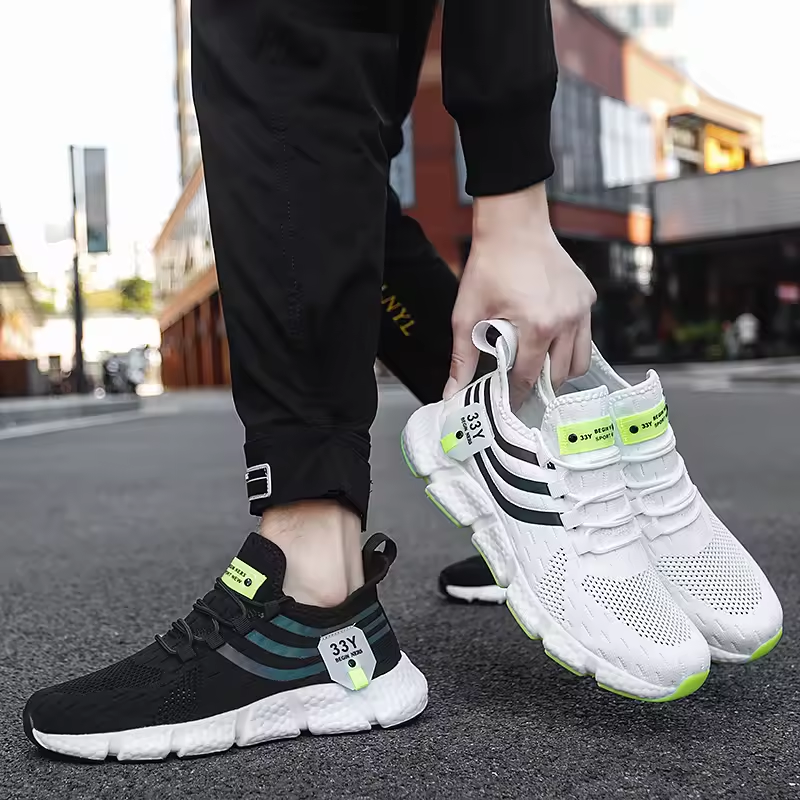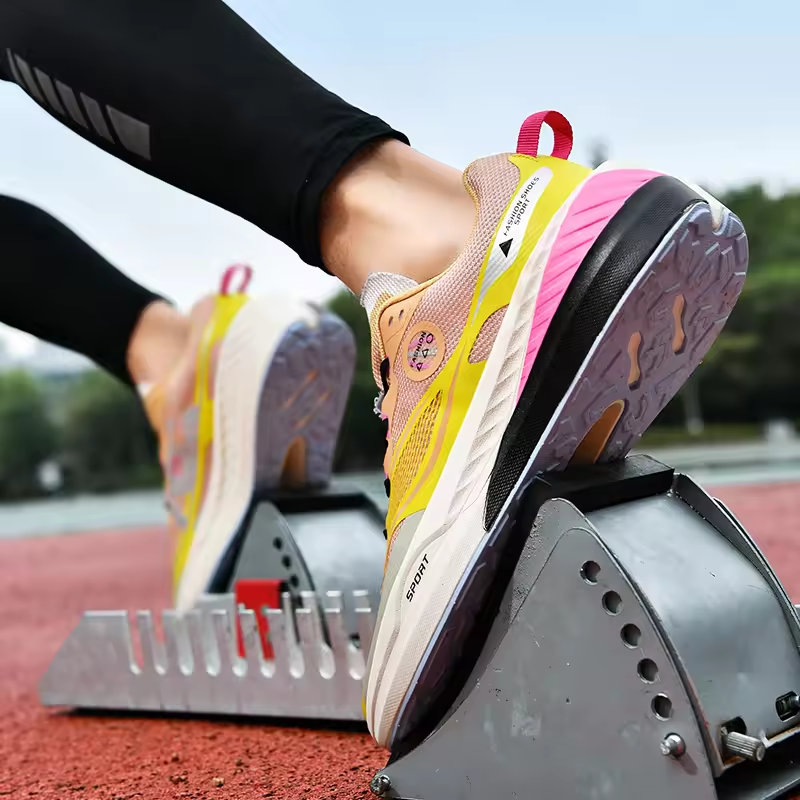What Are Green Running Shoes?
Green running shoes focus on environmental responsibility. They combine eco-friendly materials and ethical production methods. Often, they feature recycled components, biodegradable elements, or sustainable natural materials. Think recycled rubber soles or organic cotton uppers. These shoes align with a growing demand for products that reduce carbon footprints. They help preserve our planet’s resources. Companies design them with longevity in mind, minimizing waste. Green running shoes offer a practical solution for the eco-conscious athlete. They assure performance without compromising the earth’s well-being.
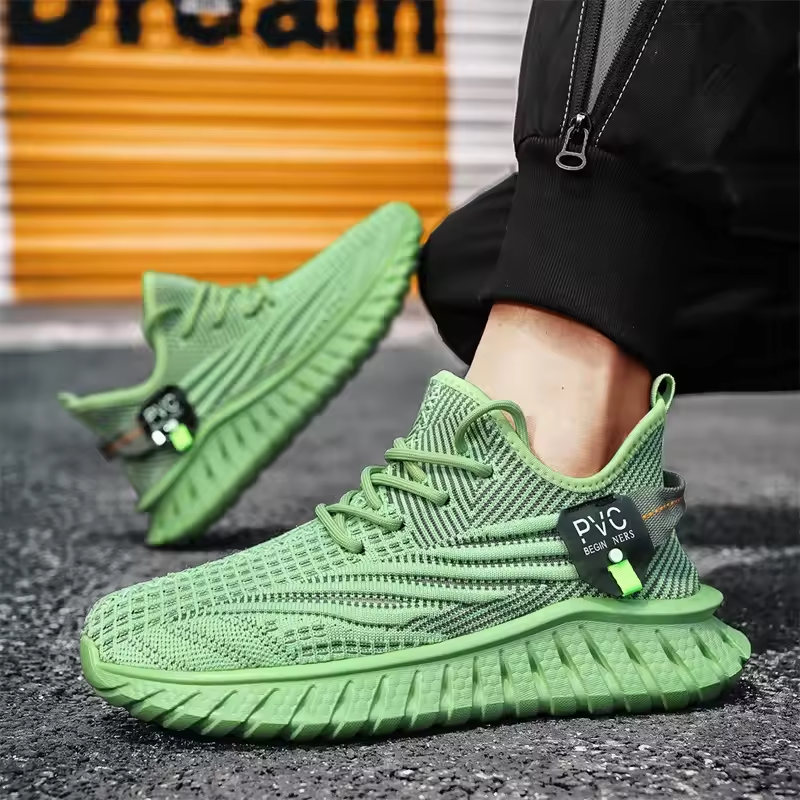
The Importance of Eco-Friendly Footwear
The choice of footwear has far-reaching implications beyond personal style and comfort. Eco-friendly shoes, like green running shoes, play a crucial role in environmental conservation. They are pivotal for several reasons.
First, manufacturing traditional running shoes often leads to high carbon emissions. These emissions contribute to climate change, a global concern. Green running shoes aim to cut down these emissions. They use materials and processes with a lower carbon footprint. By choosing eco-friendly footwear, runners can help reduce the industry’s impact on climate change.
Next, the use of non-biodegradable materials in conventional shoes causes immense waste. Millions of shoes end up in landfills each year, taking centuries to decompose. Green running shoes often feature recyclable or biodegradable materials. Hence, they are an answer to the waste problem. They support recycling initiatives and waste reduction efforts.
Moreover, the production of conventional footwear frequently involves harmful chemicals. These can pollute air and water, harming ecosystems and human health. Green running shoes are made with safer alternatives. Their production processes aim to minimize chemical usage and promote a cleaner environment.
Finally, with the growing awareness of ethical production practices, eco-friendly shoes align with consumer values. They ensure that not only the environment is considered but also the well-being and fair treatment of workers. By supporting green running shoes, consumers encourage fair labor practices in the industry.
In summary, eco-friendly footwear like green running shoes matters deeply. They offer a way to make a positive impact on the environment, promote sustainability, and endorse ethical industry practices. As consumers, our choices have power. Opting for green running shoes is a step towards a more sustainable future for all.
Top Considerations When Choosing Green Running Shoes
When shopping for green running shoes, it’s essential to keep several factors in mind to ensure you make an eco-friendly and responsible choice. Here are the top considerations:
Material Sustainability
Look for shoes with sustainable materials. Prefer organic cotton, recycled plastics, or natural rubber. These materials come from sources that don’t deplete the environment. Shoes with such materials help in conserving natural resources.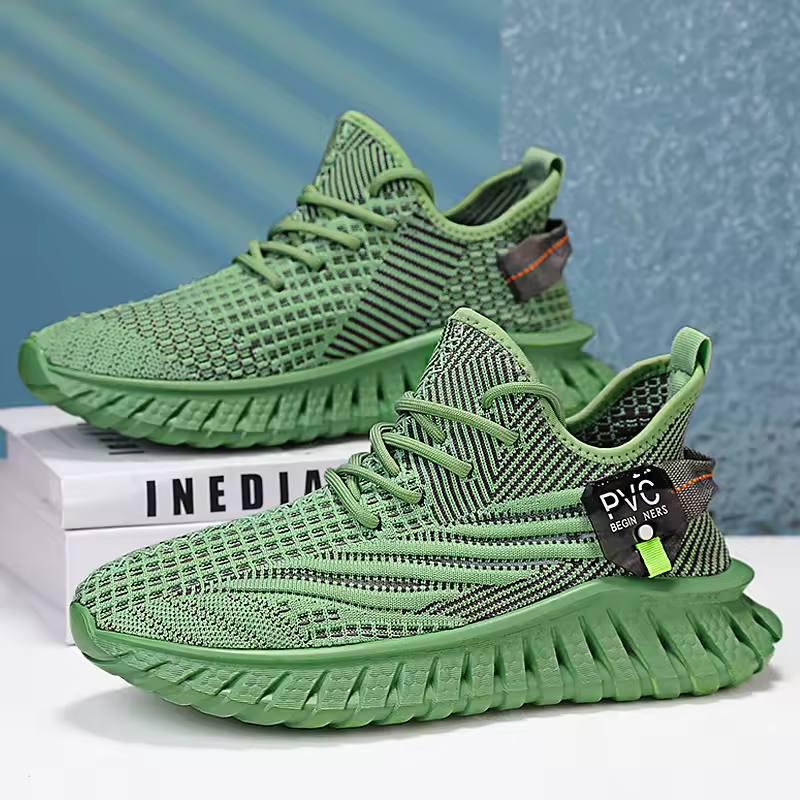
Production Process
Research how companies make their shoes. Choose brands that use clean energy and low-impact manufacturing. This further cuts down on carbon emissions and supports a cleaner production cycle.
Recyclability and End-of-Life
Consider the shoe’s lifecycle. Are they recyclable or biodegradable? Shoes designed for a second life help minimize landfill waste. Aim for those with a take-back program or proper disposal methods.
Company Ethics
Investigate the brand’s labor practices and ethical policies. Support brands that ensure fair treatment of workers. Ethical practices are as important as environmental concerns.
Performance and Comfort
Eco-friendliness should not compromise quality. Ensure the shoes meet your performance needs. They should be comfortable, well-fitting, and suitable for your running style.
Certifications
Look for environmental and social responsibility certifications. Certifications like Fair Trade or EcoCert give credibility to green claims. They indicate a brand’s commitment to sustainability standards.
Consumer Reviews and Reputation
Read reviews and learn about the brand’s reputation. Positive feedback from other eco-conscious consumers can guide your choice. A good reputation often reflects a company’s reliability in producing quality green running shoes.
By considering these key points, you can choose green running shoes that align with your values. You enhance your running experience while protecting the environment.
Materials Used in Green Running Shoes
When it comes to green running shoes, the materials matter a lot. These shoes are crafted with a focus on reducing harm to the environment. This effort starts with picking the right substances to make them. Here’s a closer look at some common materials used in eco-friendly running footwear:
Recycled Plastics
Many green shoes feature recycled plastics. Brands often use plastics from water bottles and other waste. This move turns potential waste into valuable shoe parts. It helps cut down on plastic pollution. Look for shoes with uppers or soles made from recycled plastics. This choice supports recycling efforts and reduces reliance on new plastics.
Organic Cotton
Organic cotton is another key material. It’s grown without toxic pesticides. This practice supports healthier soil and less water waste. Shoes with organic cotton uppers are soft, breathable, and sustainable. They offer comfort without compromising eco-standards.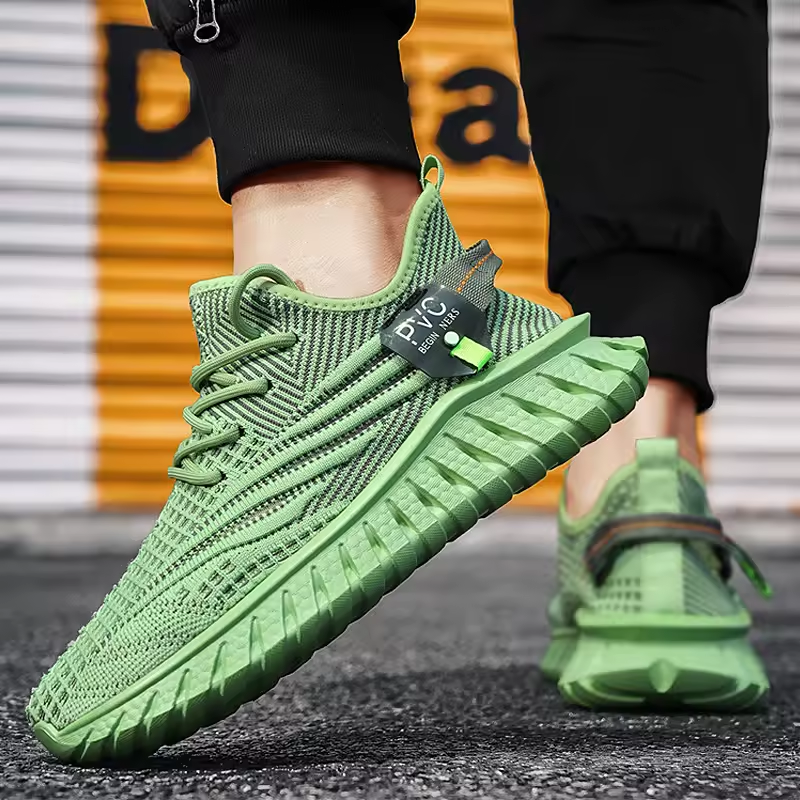
Natural Rubber
Natural rubber soles are popular in green running shoes. Harvested from rubber trees, they don’t require harsh chemicals. Rubber plantations can also absorb carbon dioxide. Choosing shoes with natural rubber soles can support sustainable practices. Plus, they offer good traction and durability.
Plant-Based Materials
Some brands use innovative, plant-based materials. These might include algae or organic linen. They come from renewable sources. These materials biodegrade faster than synthetic alternatives. Plant-based shoes often bring new textures and qualities to your run.
Wool
Wool is a plush, natural fiber. It keeps feet warm in the cold and cool in heat. Some eco-friendly shoes use this renewable material. Wool is durable and naturally odor-resistant. This makes it a strong choice for shoe construction.
In summary, the materials in green running shoes are chosen for their low impact on the planet. They cater to eco-conscious consumers seeking sustainable options. By selecting shoes with these materials, you’re not just running comfortably. You’re running responsibly too.
Benefits of Wearing Eco-Conscious Running Shoes
Wearing eco-conscious running shoes comes with a host of benefits, both for you and the planet. These shoes promote sustainability and help reduce your environmental footprint. Here are some advantages they offer:
- Reduced Carbon Footprint: Choosing green running shoes helps lower your overall carbon emissions. This is due to their eco-friendly materials and production methods.
- Waste Minimization: With materials that are recyclable or biodegradable, these shoes contribute less to landfill waste.
- Healthier Ecosystems: Safer manufacturing processes mean fewer chemicals released into the environment. This leads to healthier ecosystems.
- Ethical Practices: By selecting brands committed to fair labor practices, you support the rights and well-being of workers in the industry.
- Durability and Longevity: Many green running shoes are designed to last longer. This prevents frequent replacement and, in turn, reduces waste.
- Comfort and Performance: Despite focusing on sustainability, these shoes don’t sacrifice comfort or performance. They support your feet well during your runs.
- Positive Social Impact: Wearing and advocating for green running shoes encourages the industry to adopt more sustainable practices.
By opting for green running shoes, you are making a conscious choice that aligns with a sustainable lifestyle. You demonstrate a commitment to preserving our planet for future generations, while still enjoying the physical activity you love.
How to Verify the Sustainability of Running Shoes
When looking for green running shoes, verification of their sustainability is crucial. Here’s how to ensure the shoes you pick are truly eco-friendly:
Check the Materials
Review the shoe’s materials list. Look for natural or recycled components. These should be prominent in green footwear. Organic cotton, recycled plastics, and natural rubber are good signs.
Investigate Manufacturing Processes
Find out how the manufacturer produces their shoes. Brands committed to sustainability use clean energy and low-impact methods. These practices should be well-documented.
Look for Certifications
Seek shoes with eco-certifications. Certifications from respected third parties vouch for a brand’s green commitment. Examples include Fair Trade or EcoCert labels.
Examine Company Policies
Read up on the brand’s policies. They should show a commitment to the environment and fair labor. This is part of being a sustainable business.
Inquire About Recyclability
Ask about end-of-life options for the shoes. Can you recycle them? Knowing this helps you reduce waste down the line.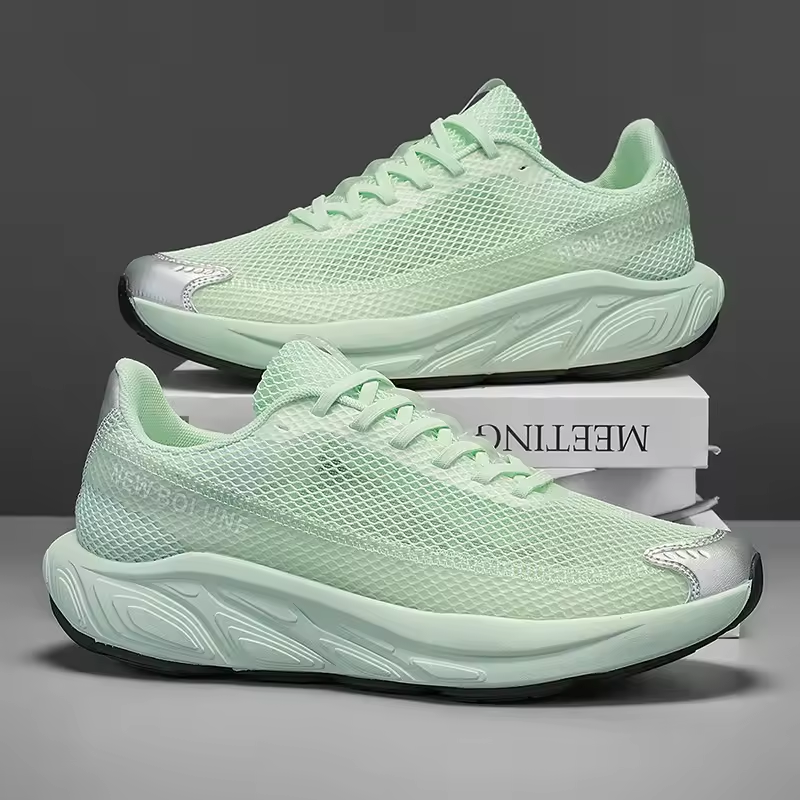
Research Brand Ethics
Dig into the brand’s ethical stance. Support those that treat workers well and enforce safe working conditions.
Read Customer Reviews
Go through reviews from other buyers. Honest feedback can reveal a lot about a product’s sustainable claims.
By following these steps, you can confirm that your running shoes are as green as they claim. Remember, every eco-conscious choice you make counts toward a healthier planet.
Popular Brands and Models of Green Running Shoes
The market offers a range of green running shoes from various environmentally conscious brands. Knowing about leading brands and their popular models can guide eco-minded runners in their selection. Here are some noteworthy brands and models that stand out in the sustainability arena:
- Allbirds: Renowned for their sustainable practices, Allbirds uses natural materials like merino wool and sugarcane-based foam. The Tree Runner is a popular model often praised for its eco-friendly construction and comfort.
- Adidas: With its commitment to end plastic waste, Adidas has introduced models like the Ultraboost Parley, made with recycled ocean plastic.
- Brooks: Brooks offers eco-friendly options like the Ghost series, featuring BioMoGo DNA technology, where the midsole can biodegrade 50 times faster than conventional soles.
- Saucony: The Saucony Jazz Court RFG is a standout, crafted entirely from renewable materials with zero plastic content.
- Veja: A brand that emphasizes transparency and ethical sourcing, Veja’s Condor sneaker is designed for long runs and made from bio-based and recycled materials.
- Nike: They have incorporated sustainable practices with their Nike Air Zoom Pegasus 36 made of recycled materials, without compromising performance.
- Merrell: Known for their outdoor footwear, Merrell has the Bare Access XTR Sweeper designed with recycled materials and a focus on reducing waste.
- Reebok: Their [Floatride Energy Grow] running shoe combines sustainability with high performance, using castor beans, eucalyptus trees, and bloom algae foam.
When considering these brands and their green running shoes, remember to check for the key elements of sustainability listed previously. Make sure they align with your values and running needs. By choosing these brands, you support sustainable practices and contribute to a healthier planet. Make your runs green in more ways than one with these eco-friendly options.
Caring for Your Green Running Shoes to Maximize Lifespan
Taking care of green running shoes is key for extending their life. Not only does it ensure they remain effective and comfortable, but it also aligns with the sustainable approach that these eco-friendly shoes stand for. Proper care reduces the frequency of purchasing new shoes, which in turn lessens environmental impact. Here’s how you can maximize the lifespan of your green running shoes.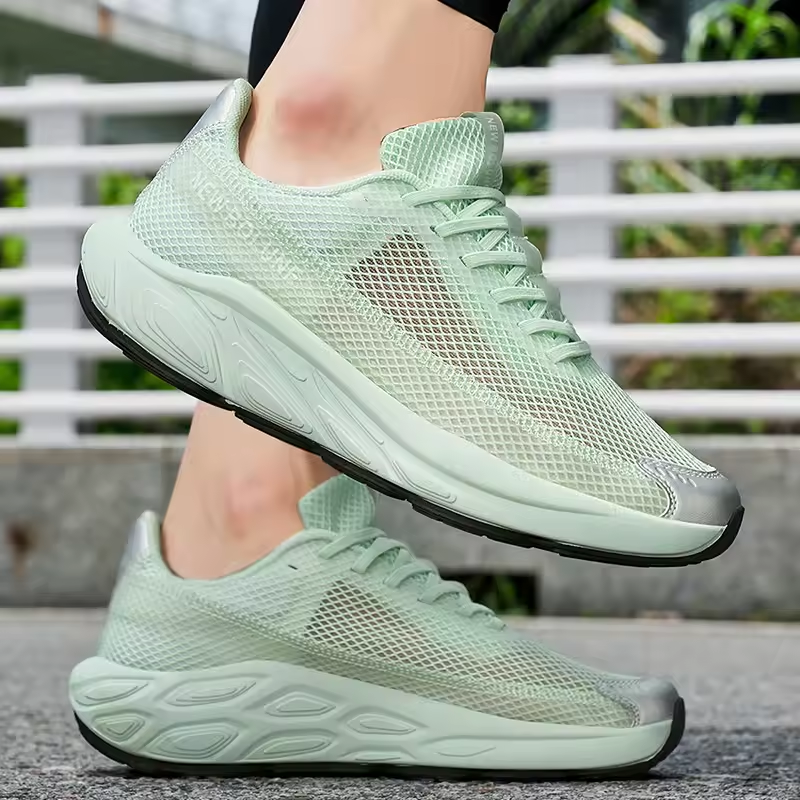
- Clean Regularly: Wipe off any dirt or mud after each run. Use a soft brush and gentle, natural soap. Avoid harsh chemicals, as they can break down sustainable materials faster.
- Air Dry: Let your shoes dry naturally. Do not put them near heaters or in direct sunlight. High heat can damage sustainable materials and adhesives.
- Use a Shoe Tree: It helps to maintain the shoe’s shape and absorb moisture. Using cedar shoe trees can also minimize odors without using sprays.
- Rotate Shoes: If you can, switch between pairs of running shoes. This gives them time to air out and reduces wear and tear.
- Follow Manufacturer Instructions: Each brand may have specific care tips for their sustainable materials. Check their guidelines to care for your shoes properly.
- Store Properly: Keep your shoes in a cool, dry place. Avoid leaving them in your car or damp areas. A breathable storage bag can protect them from dust.
- Repair if Possible: Fix small issues like loose seams or holes. Some brands offer repair services or advice for eco-friendly repairing options.
By practicing these simple care steps, you will extend the life of your green running shoes and keep them in good shape for as long as possible. This, in turn, supports the environmentally responsible choices that you have made by opting for eco-friendly footwear.
